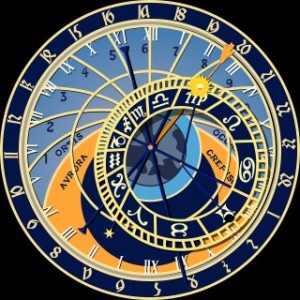About this article ?
This article at length discuses about the relevance of d20 chart in Vedic astrology and to evaluate the spiritual potential and expression of any person.
it clearly talks about why d20 or vimshamsha is important and how to do calculations or computations for the same.
how does the d20 or vimshamsha chart tell about dharma or good deeds for a person.
Again what are the 20 divisions of a d20 chart and what do they mean.
so also more details of each 20 divisions are give for the d20 chart .
Then the article gives the analysis if 12 houses of Vimshamsha or d2 chart.
It again gives a powerful summary of all the above discussed topics is given .
It then discuses the d20 charts of spiritual stalwart sri sri paramhansa Yoganada Ji and so also sri Modi Ji.
as Modi Ji also had a life in Himalayas. Again details of sri sri Ravishankar ji also given in the artcile.
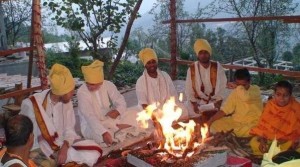
Why is the Vimshamsa Important?
Why is d20 chart so important?
Now, why is Vimshamsa Varga or divisional chart so important? As in India, we have spiritual cultures and also for any human being or person GOD realization is the final goal.
This chart helps us to know where we are and how to and where to improve upon our practices for more success.
The D20 chart, or Vimshamsha, is crucial in Vedic astrology because it provides detailed insights into the spiritual dimension of an individual’s life.
Unlike the primary natal chart (D1) which focuses on overall life patterns and material aspects, the D20 chart is specifically designed to reveal deeper spiritual tendencies, practices, and potential for spiritual growth.
By analyzing the Vimshamsha, astrologers can uncover patterns related to one’s spiritual discipline, past karmas, and ultimate spiritual goals, offering a comprehensive view of how one engages with spiritual practices and their progress on the path to enlightenment.
Additionally, the D20 chart helps in understanding how an individual’s actions and experiences in their spiritual journey align with their overall life purpose and dharma.
It highlights areas of strength and potential challenges in spiritual practices, revealing how effectively one can navigate the spiritual path.
This nuanced perspective allows individuals to make more informed decisions about their spiritual practices and personal growth, enhancing their ability to achieve meaningful spiritual development and liberation.

The basic calculation process of the Vimshamsa Varga or divisional chart?
For the Vimshamsa Varga or divisional chart or the d20 chart, we divide any sign into 20 parts with 1 Degree 30 seconds assigned for each part. also, the table starts from Aries if the planet is sitting in an active sign. The table for tabulation starts from Sagittarius or Dhanu Rashi if it is sitting a fixed sign. and it starts from Sign Leo or Simha Rashi if the planet is sitting in a mixed sign.
what does the Vimshamsa Varga or divisional chart or the d20 chart tell us about dharma or spirituality ?
this d20 chart or the Vimshamsa Varga or divisional chart we look for spiritual growth. It is also looked for Guru shishya parampara or related activities. The religious practices & inclinations of the person.
How To cast a Vimsamsa Horoscope Or Varga Birth Chart and Energies Ruling Various Divisions of Vimsamsa
The Vimsamsa or the 1/20th division of the sign or a Rashi(D-20), The counting for the lord of the first division starts from Aries onwards fro a movable sign, from Sagittarius for a fixed sign and from LEO for a common sign.
Each sign is divided into 20 parts with 1 degree 30’ each.
The deities or the energies ruling the same are in sequence for odd signs like(Aries, Gemini,Leo etc):
• Kali
• Gauri
• Jaya
• Lakshmi
• Vijaya
• Vimal
• Sati
• Tara
• Jvalamukhi
• Sveta
• Lalita
• Bagalamukhi
• Pratyangir
• Shachi
• Raudri
• Bhavani
• Varad
• Jaya
• Tripura
• and Sumukhi.
In case of Even signs(Taurus,Cancer,Virgo etc) the 20 deities, ruling are Given below:
• Daya
• Megha
• Chinnasi
• Pisachini
• Dhumavathi
• Matangi
• Bal
• Bhadr
• Arun
• Anal
• Pingal
• Chuchchuk
• Ghora
• Vaarahi
• Vaishnavi
• Sita
• Bhuvanesvari
• Bhairavi
• Mangal
• and Aparajit.
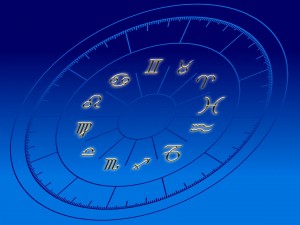
the 20 Divisions of Vimshamsha or d20 in more detail
The 20 divisions of d20 or Vimshamsha chart are different for odd and even sign.
They comprise of a length of the angle of 1 degree 30 minutes.
The various divisions of any d20 chart in the sequence of add and even are given below.
Like for divisions 1 its kali and daya. so kali is for
1 kali and daya
2 gauri and Medha
3 jaya & chinn shirsha
4 Lakshmi pishachini
5 vijaya and dhoomavati
6 vimla and Matangi,
7 sati & bala
8 tara & bhadra
9 jwalamukhi & Aruna
10 shweta & Anala
11 lalita & pingala
12 baglamukhi & chuchuchka
13 pratyangira & ghora
14 sachi and varahi
15 rudra Vaishnavi
16 bhavani Sita
17 vardha and Bhuvaneshi
18 jaya and Bhairavi
19 Tripura and Mangala
20 sumukhi and Aparajita

More details various divisions stands for in the vimshamsa or d20 chart?
now we will give an explanation of these each division number
1) kali : Just like Mata Kali redeems the universe and gives the Gyan of Brahma this division deals with that.
2) Gauri : this rules aspect of beauty of Mata Parvati. This stands for shiv bhakti, purity and extreme austerities. consort energy of Lord Shiva she follows intense practices.also gives finances and gives gifts to the bhakta.
3) Jaya: means victory. she stands for lord Narayan and she gives Solace to the world. It is the peace in meditation
4)Laxmi: she is the goddess of prosperity and it gives love & prosperity and money. It also gives gains and prosperity and luck for the person who prays to her.
5) Vijaya: This stands for victory just like the vijayadashmi victory. The worshiper conquers evil and the truth prevails.
6) vimla: Pure. This again another name of Lord Lakshmi and she is the Shakti of Lord Jagannath. It grants blessings by bhakti. It also gives prosperity.
7) sati: Sati is wife of Lord Shiva . she had attended a ceremony at a father’s place and faced humiliation. essentially the person may be loyal in worship but may still face.
humiliation due to the same.
8) tara: Tara she is just like the eighth bhava and represents the underworld. she represents the lunar cycle revival of humanity. she also connects to mysticism, spirituality and other occult things in this world.
9) Jwalamukhi: This jwalamukhi means volcano the person’s tongue emits fire like qualities .goddess Sati’s tongue fell into a volcano .worshiper of it has a fiery tongue.
10) Shweta: Shweta means white and pure this represents a goddess Saraswati and gives wisdom to the worshipper.
11)Bagla Mukhi: it is one of the Goddess often or Dasha mahavidyas. stands for moon and culture . it is for from Sri Chakra
12) Bagalamukhi: bagalamukhi she is from the dashamahavidya the 10 vidyas or knowledge gives what Siddhi to say something which happens to come true. It stands for heart center and has hypnotic powers or Manmohan in it.
13)Pratyangira :Pratyangira is the tantric goddess head she can utilize for gains for material matters. could be sued to cause rainfall or maybe cure diseases give magical powers ability to fly laghima and also the ability to become small. she can make person victories. but when the goddess is angry she can cause illness, destruction, and death
14) Sachi: Sachi is the Goddess of extreme wrath and also extreme jealousy and evil intent. It is used to create jealousy and evil intent. Generally in tantric practices.
15) Raudri: This word raudri is derived from Rudra that is the terrifying aspect of Goddess Parvati Ji. This energy destroys sin and evil thought from the person who worships her.
16) Bhavani : The goddess is ferocious in nature and giver of life and peace. it is very compassionate.This Energy is very creative. she, in fact, killed the asuras mahishasura.
17) varada : stands for Vardan or giver . it also gives the husband . it is also the giver of the child . the devotee gets good compassion and blessings .she is identified with Gauri or Uma. she gives sincerity and compassion to the worshiper.
18) Jaya: Jaya energy It is the same Jaya energy as discussed earlier.
19) Tripura: Tripura stands for Radiant light eyes of Lord Shiva. It connects to the ancient practice of Srividya. It is associated with the tripur Sundari and grants 16 Desire of the worshiper.
20) sumukhi: sumukhi is basically means good face or mouth . basically for beauty. the worshiper gets beauty in life.
21) Daya: It naturally means compassion . it is linked to the avatar Sri Rama who was very highly compassionate and humble. the energy gives away blessings and joys.
22) Medha: This energy stands for Lakshmi and Shri. that is basically money and prosperity. signifies the sacrifices of a person gives medha or intelligence. It is also goddess Saraswati of Intelligence and also studies. Gives good education worshiper indulges and he/she sacrifices things with proper intelligence & discrimination
23) chinna shirsha: This again is Devi Parvati Ji. she has a severed head in hand she has to feed on . and also to Jaya and Vijaya .the Goddess is for discernment or discrimination and courage.
24) Pishachini: this is primary to do with a female friend and Shakti Sadhana. this is for the one who is the leader of the king among the devils or rakshasas. gives to the person tantric worship.
25) dhoomvati: Dhoom meaning is the Smoky form of shakti or the female energy. This energy is without Lord Shiva. so is very ugly and fearsome. shiv blesses those people who worshiped her when the earth was underwater. she has a flag and she also has a black crow on our flag. This represents the dark forces in black magic and tantric. it is generally thirsty and hungry. tantric do worship for her in the naked state in Amavasya day or dark nights of the moon.
26) Matangi: she is a form of Devi Saraswati and also she is the daughter of the matang rishi or saint. she is resident of the throat and radiates energy like the Moon. This gives good command over speech creativity and knowledge to the sadhak or worshiper.
27) Bala: this is Bala means child form of Mata Parvati Ji when she was very young and playfull. she is playful and also is courageous and heroic. as a child, she prayed to become the wife of Lord Shiva.
To be continued…
28)Bhadra: It is to do with hunting and is a servant of Shiva. It is the energy of maa kali and is worshipped for smallpox. It is called Bhadra kali and is a benevolent form of mother Kali. It is also used to ward off the calamities or problem that come suddenly
29) Aruna: this is Aruna the charioteer of Sun god. It is reddish brown in color that is the color we see in the morning of the sunrise. It is the charioteer of the sun GOD that assumed the female form.
30) Anala: It is the Goddess of growth and fertility. she is very close to the person and the person who worships her is blessed with very sharp Intelligence and growth.
31) Nadi : this is the Nadi of the right breadth and is the basic energy of life that is prana and controls the solar and lunar channels. the person who worships her develops focus and lives long.
32) ChhuChhuka: it is the breast of the Kamla goddess. It is the wife of Lord Vishnu. The person who worships is blessed with good & divine love. It is for eternal happiness and yes gives mothers love
33) Ghora: This is the supreme energy of Lord Shiva and this could be fearful and ignorant. so one can say it has ignorance and fear both. It is creative, blissful and destructive also the worshipper may indulge in severe penances.
34)Varahi: that is Varahi this is Shakti of the Varaha boar-headed incarnation of Lord Vishnu as in the Puranas. when mother Earth was under the water he rescued it. It holds a rod for punishment. the worshipper who follows the right path gets enlightenment.
35)Vaishnavi: this energy is of Lord Vishnu and associated bird Garuda. It is the protectors for spiritual endeavors of the person.
36) Sita: It is the name of the wife of Sri Ram and is Lakshmi. mata Sita is generally said Dhartiputra or the daughter of earth .she has the feminine power and blesses the worshipper to go with long and hard journeys of spirituality.
37) Bhuvaneshwari: That is it as three Eyes this is one of the parts of the Dasha mahavidyas. It is the creator of the world and she blesses destroying all negative evils.
38)Bharavi: It is one of the fierce forms of Mata Durga. she is used to resolving fights and also resolve conflicts. also one could say an arbitrator .she dispels fear and blesses.
39)Mangla: it is the auspicious Devi and energy of Gauri of Lord Shiva. this deity is worshiped for the longevity of husband. One can be very happy and prosperous in married life.
40) aparajita: It means that which cannot be defeated or Invincible .it is one of the 11 rudras would be said a form of Goddess Durga. the person can achieve the goals and is generally not defeated aparajith = no defeat!
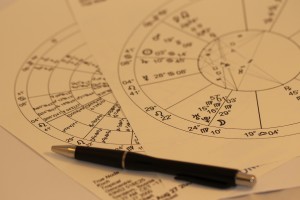
Analysis of various houses in the d20 or vimshamsa chart
First House d20
If the lagna is strong here it suggests success, fame, and fortune. Also, it suggests good success in religion-related activities. It gives hint for blessings in the worship
Second House d20
This house deals with Sanskar or good Karma of past life related to worship and it relates to speech or chanting. It also connects to Mantra chanted by the person. also worship related activities. It corresponds to the kuldevta or deity of that kula or lineage.
Third House d20
This house connects to spiritual trips or pilgrimages to do with religion . also daily personal religious advice given to others. It connects to temples to going to temples . also what one is doing in religious duties because number 3 is for communication & writing for this house. so it means communication-related to the house of dharma.
Fourth House d20
It also suggests the kind of character you observe or your ethical path. Your spiritual of Dharma actions towards society. as the fourth bhava deals with the image in general so this bhava deals with your good actions towards other people .your tolerance and activities that are group activities like Kirtana or group meditation. It connects to the village head.
Fifth House d20
5th house this house naturally deals with mantras and mantra Siddhi. It deals with our devotion and emotion for the prayers. Our thoughts of enlightenment and the path of progress.The fifth house is generally dealing with the Purva past life Punya or good deeds.
sixth House d20
deals with obstacles to do with you worship or legal conflicts one could get into in the path of self-realization or Dharma activities. if it is strong enough it suggests strong willpower to pursue one’s goals. It could also mean pain and problems related to Dharma or religion-related activities. It is the 2nd Bhava to the 5th bhava so it could oppose any Mantra Siddhi so that one can know the opposition obstacles in Mantra Siddhi Seventh House d20
This bhava has to do with dhyana or meditation. also as house 7th(seventh) connects to relationships and Groups of people so this means Havana and group activities which one does with community involvement .it could be bhajans, kirtans, Namaz, church prayers or anything for that matter. it also gives the growth of the religious activities . as being the Kendra Bhava or house it has to do with charities and celebrations as well house
Eighth House d20
As the eighth house deals with death so this mean the death of materialism. So it could also mean moksha or liberation deal or deal with nirbikalpa Samadhi or sbikalpaVikalp Samadhi. being the eighth bhava of problems and it also talks about mental pain and Aches Especially to do with the spiritual path. it also tells about the secrets of religious practices and about your bhakti bhava.
Ninth House d20
This ninth house or bhava talks about devotion and good deeds. It talks about religiousness and your donations. it also means good conduct or going to pilgrimage. it also connects to your relationship with your guru. mantra Japam as well as it is from 5th from the fifth house(mantra japam). It is the house of Dharma the house points to the Isht Devata or your dharma devta.
Tenth House d20
The tenth House deals with your patience for the worship of and the strength of your determination about the Karma or action. Especially to do with spirituality the right path following that also with dignity. it talks about a secret spell that is an action or result of mantras. it is also suggested acquisition or action of the power of Mantra on others.
Eleventh House d20
The 11th house deals with Niyam(rules) or fulfillment of the desires. eleventh bhava or house is of expansion. so for enhanced desire to worship. The desire to have gained as well because 11 bhava deals with gains and is Satvik in nature.
Twelfth House d20
The 12th(twelfth house) deals with celebration or final emancipation. it’s for the Ashram of the Guru where the emancipation happens for a person.AS it is fourth bhava form ninth bhava so represents the home of guru or ashram. It also refers to meditation or confinement or even Samadhi. That is a sleeping condition.

What are the KEY SUMMARY of the d20 or the Vimshamsha chart or Horoscope
The Vimshamsha (D20) chart is a divisional chart used in Vedic astrology to analyze a person’s spiritual inclinations, practices, and potential.
It is derived by dividing each sign of the zodiac into 20 equal parts, each representing 1 degree and 30 minutes.
The Vimshamsha chart provides insight into the spiritual growth, devotion, and meditation practices of an individual.
Key Aspects of the Vimshamsha (D20) Chart:

1. Purpose of the Vimshamsha Chart:
The Vimshamsha chart focuses on understanding the spiritual journey of an individual.
It shows how inclined a person is towards spiritual practices, devotion, and their relationship with divine forces.
This chart is often analyzed for those seeking to understand their spiritual path, including their ability to meditate, perform religious rituals, and their overall spiritual progress.

2. Calculation of Vimshamsha:
Each sign of the zodiac (30 degrees) is divided into 20 equal parts, with each part being 1 degree and 30 minutes in length.
The Vimshamsha chart is then created by placing the planets into these 20 parts, reflecting their positions in the divisional chart.
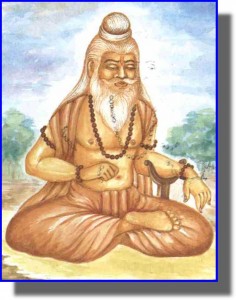
3. Spiritual Significators:
Jupiter and Ketu are key significators in the Vimshamsha chart as they represent wisdom, spiritual knowledge, detachment, and moksha (liberation).
A strong Jupiter or Ketu in the Vimshamsha chart can indicate a person who is deeply inclined towards spiritual practices and who may achieve significant spiritual progress in their lifetime.
The 5th and 9th houses are important in the Vimshamsha chart.
The 5th house represents mantra shakti (power of recitation), devotion, and purva punya (merits from past lives), while the 9th house represents dharma, higher learning, and spiritual teachers or gurus.

4. Lordship and Placements:
The placement and strength of the Lagna (Ascendant) in the Vimshamsha chart reveal the overall spiritual tendencies of the individual.
The placement of the Sun indicates one’s ability to connect with the divine and their capacity for self-realization.
The Moon in the Vimshamsha chart represents the mind’s receptiveness to spiritual teachings and the ability to attain peace through meditation.
Planets in Kendras (1st, 4th, 7th, and 10th houses) in the Vimshamsha chart often show the active involvement of a person in spiritual practices.

5.Analysis of the Vimshamsha Chart:
A well-placed Jupiter in the Vimshamsha chart suggests strong spiritual wisdom and a natural inclination towards learning and teaching spiritual knowledge.
Ketu in a favorable position can indicate a deep, mystical, and intuitive understanding of spirituality, often associated with past life spiritual merits.
Venus in the Vimshamsha can indicate devotion through rituals, artistic expression in spirituality, and a refined sense of worship.
The position of the 5th and 9th house lords is crucial in determining the effectiveness of one’s spiritual practices and their ultimate spiritual destiny.

6. House Significations in Vimshamsha:
1st House:
Represents the overall spiritual path and dedication of the individual.
The Vimshamsha (D20) chart offers deep insights into an individual’s overall spiritual path, revealing their innate tendencies, devotion, and potential for spiritual growth.
In this chart, the Ascendant and its lord play a crucial role in determining the foundation of one’s spiritual journey.
Strong placements of Jupiter and Ketu, along with beneficial influences on the 5th and 9th houses, suggest a natural inclination towards spiritual practices, wisdom, and devotion.
The chart reflects how well an individual aligns with their spiritual dharma, their ability to overcome obstacles on the path, and the likelihood of attaining spiritual fulfillment or liberation.
2nd House:
Connected to speech, the chanting of mantras, and accumulation of spiritual knowledge.
In the Vimshamsha (D20) chart, the 2nd house is specifically connected to speech, the chanting of mantras, and the accumulation of spiritual knowledge.
This house reflects the potency of one’s words in spiritual practices and the effectiveness of their vocal expressions, such as prayers, recitations, and mantras.
A strong and well-placed 2nd house, or its lord, indicates an individual with a profound ability to use speech as a powerful tool for spiritual growth.
Such a person is likely to excel in mantra chanting and may derive significant spiritual benefits from their vocal devotion and recitations.
3rd House:
Indicates courage in spiritual practice, efforts in sadhana (spiritual discipline), and communication with spiritual mentors.
In the Vimshamsha (D20) chart, the 3rd house signifies courage in spiritual practice and the efforts one puts into their sadhana (spiritual discipline).
This house reveals the individual’s determination, willpower, and inner strength to pursue and maintain their spiritual practices, even in the face of challenges.
A strong and positively influenced 3rd house, or its lord, suggests that the person is likely to show resilience and persistent effort in their spiritual journey.
They are motivated to overcome obstacles and are inclined to take bold steps in their pursuit of spiritual goals, making them steadfast in their sadhana and committed to their spiritual growth.
4th House:
Reflects inner peace, meditation, and spiritual contentment.
In the Vimshamsha (D20) chart, the 4th house reflects inner peace, meditation, and spiritual contentment.
This house represents the deep emotional and mental stability that one achieves through spiritual practices.
A strong 4th house or its lord indicates an individual’s ability to find tranquility and a sense of fulfillment in their spiritual life.
It suggests a natural inclination towards meditation and practices that calm the mind, leading to a state of inner harmony.
Such a person is likely to experience a deep, abiding peace and contentment from their spiritual pursuits, creating a solid foundation for their overall spiritual well-being.
5th House:
Represents devotion, mantra chanting, and purva punya (past life spiritual merit).
In the Vimshamsha (D20) chart, the 5th house represents devotion, mantra chanting, and purva punya (past life spiritual merit).
This house is key to understanding an individual’s inherent spiritual inclinations and the depth of their devotion.
A strong and well-aspected 5th house or its lord indicates a person with a deep connection to devotional practices, such as chanting mantras, which are likely to be a significant part of their spiritual routine.
Additionally, the 5th house reflects the spiritual merits carried over from past lives, which can manifest as an intuitive understanding of spiritual principles and a natural ease in progressing on the spiritual path.
This house shows how one’s past life good deeds contribute to their current spiritual journey, enhancing their devotion and ability to achieve spiritual fulfillment.
6th House:
Challenges, obstacles, and enemies in the spiritual path.
In the Vimshamsha (D20) chart, the 6th house represents challenges, obstacles, and enemies encountered on the spiritual path.
This house highlights the difficulties one might face in their spiritual journey, such as internal struggles, distractions, or opposition from external sources.
A strong 6th house or its lord might indicate an individual who, despite facing significant challenges, possesses the resilience and determination to overcome them.
Conversely, a weak or afflicted 6th house can suggest persistent obstacles that may hinder spiritual progress, requiring greater effort and discipline in sadhana (spiritual practice).
The 6th house in the D20 chart teaches valuable lessons about perseverance, patience, and the need to confront and transcend one’s limitations in the pursuit of spiritual growth.
7th House:
Partnerships and relationships in spiritual practices.
In the Vimshamsha (D20) chart, the 7th house represents partnerships and relationships in spiritual practices.
This house signifies the role of spiritual companions, teachers, or mentors who may influence and support one’s spiritual journey.
A strong 7th house or its lord indicates positive and harmonious relationships that enhance spiritual growth, such as the presence of a guiding mentor, a supportive partner in spiritual endeavors, or a community that shares similar spiritual goals.
These partnerships can provide inspiration, guidance, and encouragement, helping to deepen one’s practice.
Conversely, challenges in this house might reflect difficulties in finding the right spiritual connections or encountering discord in spiritual relationships, which can impact the progress and harmony of one’s spiritual path.
8th House:
Transformation, occult practices, and deep spiritual experiences.
In the Vimshamsha (D20) chart, the 8th house is associated with transformation, occult practices, and deep spiritual experiences.
This house represents the intense and often transformative aspects of the spiritual journey, where one may undergo profound inner changes or delve into mystical practices such as tantra, astrology, or other esoteric disciplines.
A strong and positively influenced 8th house indicates a person who is likely to experience significant spiritual rebirths, shedding old patterns, and embracing deeper truths.
It also suggests an inclination toward exploring hidden or occult knowledge as a means of spiritual evolution.
The 8th house in the D20 chart points to the potential for powerful spiritual breakthroughs, often catalyzed by intense inner work, leading to a deeper understanding of the mysteries of life and the universe.
9th House:
Dharma, higher learning, and connection with spiritual teachers.
In the Vimshamsha (D20) chart, the 9th house represents dharma, higher learning, and connection with spiritual teachers.
This house is a crucial indicator of one’s spiritual beliefs, moral principles, and the pursuit of higher knowledge.
It reflects an individual’s dedication to their spiritual duties (dharma) and their quest for wisdom through study and practice.
A strong 9th house or its lord signifies a deep connection with spiritual teachers or gurus who guide and inspire the individual on their spiritual journey.
It also suggests a natural inclination toward understanding and living by spiritual laws, engaging in higher education related to spirituality, and cultivating a sense of purpose aligned with one’s spiritual path.
The 9th house in the D20 chart embodies the pursuit of truth, the guidance of wise mentors, and the commitment to living a life of spiritual integrity.
10th House:
Actions, deeds, and the external expression of spirituality.
In the Vimshamsha (D20) chart, the 10th house reflects actions, deeds, and the external expression of spirituality.
This house signifies how one manifests their spiritual beliefs and practices in their everyday life and public sphere.
A strong and well-placed 10th house or its lord indicates that the individual actively integrates spiritual principles into their career, social roles, and public activities.
It shows a person who not only practices spirituality privately but also expresses and upholds spiritual values in their professional life and interactions with the broader community.
Challenges or weaknesses in this house might suggest difficulties in aligning one’s external actions with their inner spiritual convictions, requiring extra effort to harmonize one’s spiritual aspirations with their outward responsibilities and achievements.
11th House:
Gains from spiritual practices, community, and social groups in spirituality.
In the Vimshamsha (D20) chart, the 11th house represents gains from spiritual practices, as well as involvement with community and social groups related to spirituality. This house indicates how spiritual pursuits can lead to rewards, such as spiritual growth, recognition, or material benefits gained through spiritual efforts. It also reflects the influence of being part of spiritual communities or networks, which can offer support, shared wisdom, and collaborative opportunities for growth. A strong and positively placed 11th house or its lord suggests that the individual is likely to experience substantial benefits from their spiritual practices, enjoy supportive social interactions, and thrive within groups that share similar spiritual goals. Challenges in this house may point to difficulties in realizing the full potential of spiritual gains or in finding a supportive community for spiritual growth.
12th House:
Moksha, liberation, and the ultimate surrender to the divine.
In the Vimshamsha (D20) chart, the 12th house signifies moksha (liberation), the ultimate surrender to the divine, and the culmination of one’s spiritual journey.
This house represents the final stage of spiritual development where the individual seeks to transcend the cycle of birth and rebirth and merge with the divine.
A strong and positively influenced 12th house or its lord indicates a person who is likely to achieve a profound sense of spiritual liberation, experiencing deep inner peace and surrender.
It suggests a natural affinity for practices that lead to self-realization and detachment from worldly concerns.
Challenges in this house may point to struggles with letting go of material attachments or difficulties in fully embracing spiritual surrender, highlighting areas where additional effort may be needed to attain the ultimate spiritual goal.

Conclusion:
The Vimshamsha (D20) chart is a powerful tool in Vedic astrology for understanding an individual’s spiritual journey.
By analyzing the planets, houses, and their lords in this chart, an astrologer can provide insights into a person’s spiritual inclinations, potential challenges, and the likelihood of attaining spiritual fulfillment or enlightenment in this lifetime.
What was different about Sri Sri Paramhansa Yogananda Ji ?

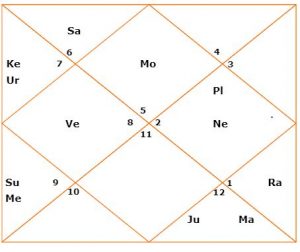
It has to be noted that Sri Sri Paramahansa Yogananda Ji Guru Ji he was one of the most powerful and significant yogi and spiritual savants of India in the 19th and 20th century. he was primarily responsible for the revival of knowledge of kriya yoga that was given by Sri Lord Krishna when dwapar ended and Kali Yuga started at the time of Bhagwat Gita was given to the world. this knowledge of Kriya Yoga got lost in ghora Kali Yuga, which was worse in 6 AD and 7 AD creating a lot of falsehood being spread. It was revived by maha avatar Babaji.
He was a chela of the lion of Bengal and one of the greatest astrologers swami Sri Sri Yukteshwar Giri Ji , who in turn was a chela of Sri Sri lahari mahasya ji. In fact, it is said that Sri Sai Baba Ji of Shirdi was chela of Sri Sri lahari mahasya ji. people have told that portrait of Sri Sri Lahiri ji is in the museum at Shirdi.
paramahansa Yogananda Ji totally refined and revised the entire kriya yoga for the common man . he was a creative Yogi in that sense.
What made Sri Sri Paramahansa Yogananda Ji a spiritual Savant based on his d1 chart/horoscope ?
he or Sri Sri Paramahansa Yogananda Ji has Leo or Simha lagan person. due to his lagna, he was the lion spirituality. he was a student of Swami Sri Yukteshwar Giri Ji the lion of Bengal s said earlier. the Lord of his Lagna bhava sits in the fifth bhava of Purva janma Punya. his personality or his body naturally get the good benefits of his past life Karma and Punya/penances. It is said he was already a liberated master and came to earth just to redeem others. he took some karma on himself.
The fifth bhava is for Mantra Siddhi and also siddhi of recitation of mantras eleventh Lord mercury is sitting there. It is a very good Siddhi in yogic practices and one could gain great expertise as 11th house of gains is there. Leo or sun gives him great will power and strength from his past life that is the fifth bhava. rahu in the ninth bhava or 9th house of Dharma gives Sri Sri Paramhansa Yogananda Ji great energy and discipline to follow the Dharma.Also, the twelfth bhava of the spirituality or Lord moon is sitting in the lagna of Paramahansa Yogananda Ji so giving him the vairagya bhava of the afterlife.
Jupiter or guru The Lord of 5th Bhava of Purva Janm Punya for Sri Sri Paramhansa Yogananda Ji is sitting in the eighth bhava that gives great spiritual knowledge and occult knowledge .mars the planet of action and karma and lord of ninth bhava is sitting with Jupiter or Guru. so that gives a great action in Karma as it connects to lagan lord sun.
lagna being Leo ruled by the sun gives a great personality ability to create new kind of spiritual practices.
what makes sri sri paramhansa Yogananda ji do so different in the spiritual world based on d20 or vimshamsa chart or horoscope?

Aries rules the d20 chart of Sri Sri Paramahansa Yogananda ji. lagna Lord sits on itself. It gives great strength and Spiritual practices for sri sri Paramahansa Yogananda Ji. as we know that first house stands for good deeds and blessings in worship.
The lord of the house of dharma connects to the eight houses which have sun there the lord of the lagan of d1 chart. so this sends energy to Pujan Karma and occult and spirituality to the lagna. Gives great esoteric knowledge. Now so many planets in the eighth bhava mean so much of energy in the eighth bhava. as the eighth bhava stands for Moksha, sitting here for Yogananda Ji it gives full Moksha and reveals the secrets of worship.
lot of energy and gives great Moksha for Sri Sri Paramahansa Yogananda Ji. Sun is the lord of Lagna in the D1 chart so that gets good energy of past life Karma in the d20 chart.Mercury the karaka for Siddhi sitting in the fifth bhava in the D20 chart of Paramahansa Yogananda Ji rules eleventh and second bhava. Gives many pilgrimages . also some obstacles to the path of sadhana which swami Yukteshwar Giri ji removed. overall sun gave him great will power to be a success in spiritual life. He has been one of the greatest Guru of the times!!!

What is the spiritual quotient in sri Narendra Modi ji based on lagna and d20 or vimshamsa chart?
we know that Sri Narendra Modi ji is highly spiritual. he left for the Himalayas at a very young age and has been doing yoga plus Sadhana for a while. as well he stayed in the Himalayas for a while and currently he keeps Navratri vrata or fast as well.
He also does yoga and meditation regularly.
what does the D1 (lagna) chart of Narendra Modi ji say about his spirituality ?
In the lagna or d1 chart of sri narendra modi ji the Scorpio lagna or vrishchika rashi is rising . Scorpio sign ruled by mars is a sign(rashi) which makes the person to get deep into occult studies), spirituality, Samadhi( death of self)or even astrology .
The Lagna Lord mars(mangal) is sitting in the lagna itself, that strengthens the lagna. that is the action/will power and The Spiritual quotient for Narendra Modi Ji .also moon The Lord of Dharma is sitting in the lagna and that will bless sir Narendra Modi Ji with great Fortune Plus interest in religion or Dharma.
In the horoscope of sri Narendra Modi ji Jupiter or Guru is the Lord of Purva Punya or past life or previous incarnation good deeds is sitting in the 4th bhava.
This gets the influence the lord of Poorva Punya(5th house) and aspects is tenth house of actions or karma.
5th house + Jupiter ===> Career and actions of narendra Modi Ji
===> Career and actions of narendra Modi Ji 
will have Dharma or religious actions as well. That is for sure.
What does the vimshamsa or the d20 chart of sri narendra modi ji say about his spiritual quotient
now let us look at the d20 or vimshamsa chart/horoscope of Sri Narendra Modi Ji and about his spirituality. Now for Narendra Modi Ji The Lord of Dharma is Jupiter or Guru itself and rules Lagna and sits in the fifth bhava or house of Purva Punya or past life good karma. so this is a very strong combination suggesting great good deeds done in the past life and also this life by sri Narendra Modi ji.
that’s what is evident for prime minister of India .the lord of 9th bhava is Sun which is very strong on Sun. so sun or Surya gives great gains and also very good dharma. This bhava or house also gives excellence in Dharma. so as Narendra Modi Ji grows older he will grow much deeper into Dharma or religion . also the Moksha Bhava or the liberation bhava for Narendra modi this the eighth house. Lord Moon is very strong for Narendra Modi but also note that Saturn(Shani) is sitting there. some obstacles in Sadhana could be there. also, Rahu is sitting in the twelfth house. he will do and be very successful from The Spiritual point of view. When he leads a retired from lifelike Sri Atal Behari Vajpayee jee!
Sri Sri Ravi Shankar ji’s His spiritual quest and Sudarshan kriya based on d1 or lagan chart- what does it say?


As we know that Sri Sri Ravi Shankar Ji horoscope is one of the greatest spiritual Guru’s of India at the moment in the 21st century and great blessing for every India. at first, let us address his spiritual achievements and then look at his vimshamsa chart or d20 options.
sri Sri Ravi Shankar Ji’s lagna or ascendant chart it is ruled by Capricorn sign or Makara Rashi and this gives leadership capabilities to him (10th sign) and the ability create large structures due to Saturn the discipline creator and also it being well placed in 11th Bhava .this creates Rajyog for Sri Sri Ravi Shankar Ji also Rahu is sitting in the eleventh house so unexpectedly his organizations would grow. That is what has happened. The lord of the ninth bhava or Virgo sign or Kanya Rashi is sitting in the fifth house of Mantra Shastra and Siddhi. also mercury especially Virgo deals with mantra chanting ability.
Mercury the lord of dharma and past life great karma for Sri Sri Ravi Shankar Ji is sitting with the very strong & exalted moon with Ketu well. ketu is a spiritual planet and close to planet Moon. so overall the Yoga is very strong dharma . as the ninth bhava lord is connecting to the Purva Punya fifth house or bhava for Sri Sri Ravi Shankar Ji. so overall gives great success and Siddhi for Sri Sri Ravi Shankar Ji. so it all give shim success Mantra Sadhana and other Sadhana’s. One has to note that the house of public image sign Aries ruled by mars is sitting in the Lagna or ascendant that is exalted and strong. so all this Ravi Shankar Ji very clearly suggests that he will have a very great public image because mars or Mangal it is exalted in the Capricorn sign or Makara Rashi for him.
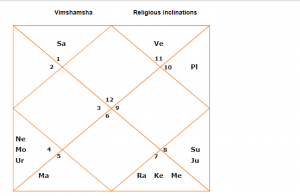
Sri sri ravi shankar ji’s His spiritual quest and inspiration for sudarshan kriya based on d20 or vimshamsa chart- what does it say?
Now let’s look at the vimshamsa chart or horoscope of Sri Sri Ravi Shankar Ji. here Pisces or Meena Rashi is the Lagna or Jupiter itself is very strong. The lord of the Pisces sign or Meena Rashi and that is sitting in the ninth bhava of Dharma for Ravi Shankar Ji. There cannot be anything as interesting as this. this very Yoga in the d20 chart or vimshamsa Varga chart clearly suggests a Rajyog for dharma for Ravi Shankar Ji. Note Jupiter or guru is the Planet of Dharma and also is in the ninth house dharma and past life good Karma and God. We note that Scorpio sign or Vrishchika Rashi also sits there. so great Yoga for any Investigation and spiritual practices. The inner investigation lead to the Sudarshan kriya.
The desire for dharma for Ravi Shankar Ji to get into spirituality could be great and it and give him great success as well due to his good past life Karma indicated by Lagna. this is based on the first bhava or house reading for vimshamsa chart. sitting in the ninth bhava guru blesses him with success in dharma.
Now looking at the fourth bhava of Sri Sri Ravi Shankar Ji that is to do his efforts towards society like popularizing Sudarshan kriya and bhajan Keertan and congregations. We note mercury that again is the Karaka for Mantra chanting in d20 is in the eighth or 8th house along with spiritual planet Ketu . and Venus sitting in the 12th(twelfth) bhava or house means that his image public image will go and expand to foreign lands as well. As 12 bhava being a sign of spirituality and so is Ketu spiritual so overall great for bhajan kirtan and congregational activities in all over India and across in overseas as well
Let us look at the seventh house for Sri Sri Ravi Shankar Ji. It also connects to the code of conduct fourth bhava and strongly suggest the community involvement Sri Sri Ravi Shankar Ji. Mercury ruling the fourth and seventh and sitting in the eighth bhava sets the stage for the revelation of Sudarshan Kriya and spreading the same in India. It also would involve him deeply into spiritual practices.
Looking at the sixth house for Sri Sri Ravi Shankar Ji. We see for obstacles in part of worship. He has Leo sign or Simha Rashi sand powerful mars lord of 2 and 9th bhava coming from 6th bhava. it does create problems in sadhana for Sri Sri Ravi Shankar Ji. he had struggles initially when he was following Sri Sri Mahesh Yogi of transcendental meditation. Then after connecting to Sri Sri devrarha baba Ji Maharaj he took an alternative path looking > now looking at the ninth bhava again for sri sri Ravi Shankar Ji. that is for his Guru. there is sun or Surya sitting there and so is Jupiter so this suggests that his Guru would be highly dignified just like God, also due to sun his father(Pitaji called lovingly by him) could also be his Guru. he, in fact, was his Vedic mathematics teacher. because Jupiter is sitting ninth bhava Jupiter or guru means heavy so means God himself would be his guru.
Now looking at the 12th bhava of emancipation in d20 vimshamsa of Sri Sri Ravi Shankar Ji horoscope. In regard to emancipation & self-realization aspects, there is Aquarius sign or Kumbh Rashi there. That may make him more reflective later. But Saturn the lord is debilitated & weak in the markesh bhava second. so he will have to struggle a bit more before final emancipation. so it suggests managing patient by doing a lot of Dharma activities. he may want but not get much seclusion and full focus on meditation .sri Sri Ravi Shankar Ji has to stay with the crowd. he has to work and manage things even at later stages of his life. we wish him a long 120 years life.!

















 ===> Career and actions of narendra Modi Ji
===> Career and actions of narendra Modi Ji 





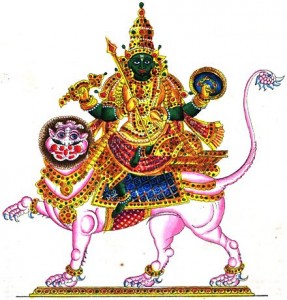
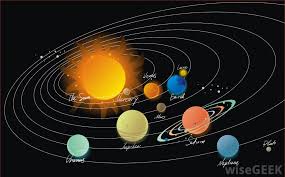


 Your Horoscope OR Kundali FREE-Includes Personality,Career,Love,Longevity etc Predictions! CLICK HERE
Your Horoscope OR Kundali FREE-Includes Personality,Career,Love,Longevity etc Predictions! CLICK HERE 



